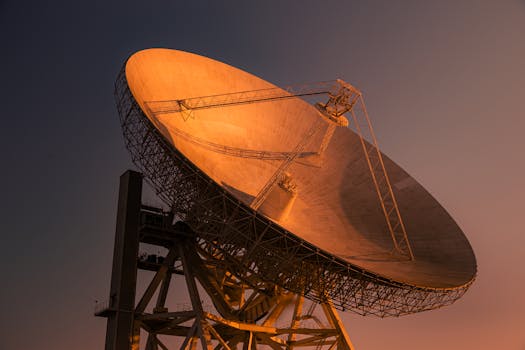MEO Satellites: The Future of Satellite Communications – WordPress

MEO Satellites: The Future of Satellite Communications
MEO satellites, or Medium Earth Orbit satellites, are a type of satellite that operates in a medium earth orbit, which is approximately 2,000 to 36,000 kilometers above the earth’s surface. These satellites are a crucial part of modern satellite communications, offering a range of benefits and applications. In this article, we will explore the world of MEO satellites and their role in shaping the future of satellite communications.
MEO satellites are designed to provide a range of services, including navigation, communication, and earth observation. They are often used for applications such as GPS, satellite radio, and satellite broadband. One of the key benefits of MEO satellites is their ability to provide global coverage, making them ideal for applications that require widespread coverage.
How MEO Satellites Work
MEO satellites work by transmitting and receiving signals to and from earth-based stations. They are equipped with a range of instruments, including antennas, transponders, and power sources. The satellites are launched into space using a rocket and are placed into a medium earth orbit, where they can communicate with earth-based stations.
MEO satellites use a range of frequencies to communicate with earth-based stations, including C-band, Ku-band, and Ka-band. They are also equipped with a range of antennas, including parabolic antennas and phased array antennas. The satellites are powered by solar panels, which provide the energy needed to operate the satellite’s instruments.
Applications of MEO Satellites
MEO satellites have a range of applications, including navigation, communication, and earth observation. They are often used for applications such as GPS, satellite radio, and satellite broadband. MEO satellites are also used for earth observation, providing high-resolution images of the earth’s surface.
One of the key applications of MEO satellites is navigation. GPS, or Global Positioning System, is a network of MEO satellites that provide location information to GPS receivers on the ground. The GPS system consists of a constellation of 24-32 MEO satellites, which transmit signals to GPS receivers on the ground.
Benefits of MEO Satellites
MEO satellites offer a range of benefits, including global coverage, high-speed data transfer, and reliability. They are ideal for applications that require widespread coverage, such as navigation and communication. MEO satellites are also highly reliable, with a lifespan of up to 15 years.
MEO satellites are also highly flexible, with the ability to be used for a range of applications. They can be used for navigation, communication, and earth observation, making them a versatile tool for a range of industries.
In conclusion, MEO satellites are a crucial part of modern satellite communications, offering a range of benefits and applications. They are designed to provide global coverage, high-speed data transfer, and reliability, making them ideal for applications such as navigation, communication, and earth observation.
MEO satellites are an exciting technology that is shaping the future of satellite communications. With their ability to provide global coverage, high-speed data transfer, and reliability, they are an essential tool for a range of industries. As the demand for satellite communications continues to grow, MEO satellites will play an increasingly important role in meeting this demand.
WordPress users can benefit from MEO satellites by using plugins and themes that are optimized for satellite communications. There are a range of plugins and themes available that can help WordPress users to take advantage of the benefits of MEO satellites, including global coverage and high-speed data transfer.
Overall, MEO satellites are a powerful tool for satellite communications, offering a range of benefits and applications. They are an exciting technology that is shaping the future of satellite communications, and WordPress users can benefit from using plugins and themes that are optimized for satellite communications.

